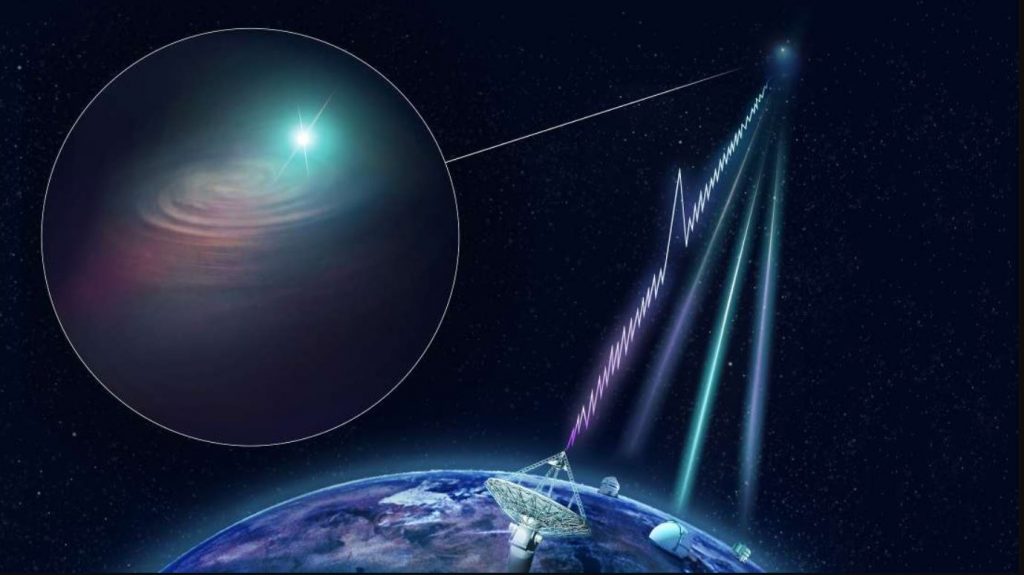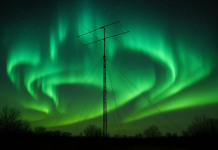Astronomers have, for the first time, discovered the source of a mysterious non-repeating pulse of cosmic energy known as a fast radio burst.
Fast radio bursts (FRBs) have perplexed researchers for years, appearing as fleeting signals from the distant universe that can’t yet be explained definitively.

Fast radio bursts (FRBs) are extremely quick, powerful emissions of radio waves with mostly unclear origins.
Just over two dozen unique examples of these FRBs are known, with only two of them seen repeating. The other ones were just flashes in the cosmic pan.
It’s thought that these brief flashes may come from black holes or neutron stars, though some have even speculated they may be of alien origin.
While scientists recently were able to trace the origin of a repeating FRB, FRB 121102, which pulsed numerous times over a span of months from a dwarf galaxy about 3 billion light-years from us, finding the source of a single burst that lasts less than a millisecond is far more challenging.
Now, for the first time, researchers have discovered the origin of a non-repeating FRB.
FRB 180924 pulses from a spiral galaxy 3.6 billion light-years away
FRB 180924 was discovered by the Australian Square Kilometre Array Pathfinder (ASKAP) radio telescope. The observatory is made up of 36 antennae at slightly different distances, so the signal – which lasted just a fraction of a millisecond – reached each at slightly different times (less than a billionth of a second). This tiny time delay allowed the researchers to pinpoint where the burst originated.
“This is the big breakthrough the field has been waiting for since astronomers discovered fast radio bursts in 2007,” CSIRO lead author Dr Keith Bannister said.
The FRB came from a large spiral galaxy by the name of DES J214425.25−405400.81. The galaxy is located 3.6 billion light-years from Earth, and the burst was roughly 13,000 light-years from the core of that galaxy.
The galaxy was observed with the European Southern Observatory’s 8-m Very Large Telescope in Chile and the distance was measured with the 10-m Keck telescope in Hawai’i and the 8-m Gemini South telescope in Chile.
“The burst we localised and its host galaxy look nothing like the ‘repeater’ (FRB 121102; see above) and its host,” co-author Dr Adam Deller, from Swinburne University of Technology, added. “It comes from a massive galaxy that is forming relatively few stars. This suggests that fast radio bursts can be produced in a variety of environments, or that the seemingly one-off bursts detected so far by ASKAP are generated by a different mechanism to the repeater.“
Researchers were unable to determine the source of this powerful event, but the ability to locate it gives them hope that we might catch the after-effects of whatever is producing these spectacular bursts in the future.
Yes we will find some aliens soon and will hopefully be able to speak with them!












